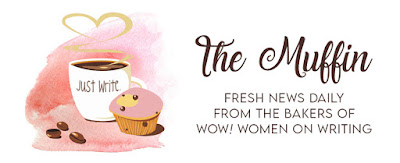 |
| Most of the books we read aren't anything like what we wrote in high school. Credit | Elizabeth Humphrey |
This past week, I’ve been getting about a dozen articles edited and ready for publication. They are written by others and I’ve noticed some similarities among the majority of submissions. They were written as if the articles (stories conveying a beginning, middle, and end) are reports written for a high school English teacher (thesis, supporting points, conclusion).
Now, don’t get me wrong, reports for English teachers are important. Necessary, particularly if you are navigating your way through high school. But judging your audience for anything you are writing and there are few publications that many of us write for that are directed at our English teachers.
But three-part essays are the writing experiences many of us are used to before we launch into writing for magazines. We may read books and books that look nothing like a high school essay does and still we continue to replicate the form.
Here are some tips for your drafts to catch yourself if you tend to keep your drafts out of high school:
1. It starts during the planning stages. Scribble out an outline. Doesn’t have to be an “official” outline. Just something that can guide you through your story and help you keep track of the information. I often find that if you sketch something out, the informal structure can give your story’s flow a more informal feel.
2. Watch your language. If you need to look up every other word you are using, take a step back. You want your general audience to understand what you are saying. If you don’t, how will they?
3. Massage your transitions. I know when I’m trying to write a research paper, my transitions use a lot more of the “therefore” and “however” language. What are your transitions doing? Are they formal or more informal? I know when I’m reading a well-written article, written for a general audience, the language is straightforward and the transitions seem easier.
4. Provide a soft landing. Some articles deserve to bring the article back to the beginning to make a point. Others just need to end. Don’t try to force an ending that isn’t there for the story.
5. Re-read! Read your story back to yourself—out loud—and read it as your audience would. Not as your English teach might.
That’s it…no false ending. Now, get out there and write!
Elizabeth King Humphrey is a writer, teacher and editor living in North Carolina. And she had some of the best high school English teachers. Ever.

Interesting. As an English teacher AND a freelancer, I think quite a few magazines use the three-part essay format. Heck, I can remember writing a piece for WOW! and ending it WITHOUT a conclusion and it was promptly sent back to me by an editor and I was instructed to add a conclusion.
ReplyDeleteWhat it comes down to is knowing what each publication - and editor - wants. One editor I work with wants each article to end with a power quote. That's tough if you don't get one during the interview!